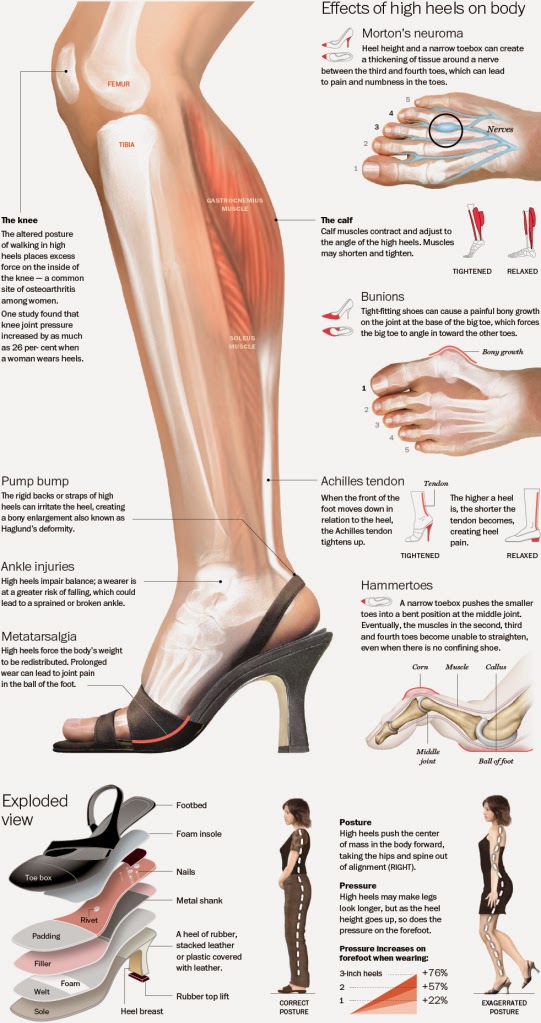But the truth is, while wearing a fabulous pair of heels can do wondrous things for your confidence, wearing them puts a tremendous amount of stress on our bodies and can lead to a myriad of orthopedic problems for years to come.
Pump problems
High heels cause you to bear your weight on the balls of your feet. Three-inch-high heels put seven times higher pressure on this area than when you are wearing flats, which can lead to metatarsalgia (pain and inflammation at the ball of your foot.) Other foot problems related to high heels include bent or curled ‘hammertoes’, corns, bunions and even a shortened Achilles tendon over time.
Muscle and joint pain
Because your body is not structurally designed to wear high heels, you’re required to do a great deal of compensating when walking because your spine and hips are pushed out of alignment. This can lead to knee problems, lower back pain and even neck and shoulder pain. And over time, you’ll also likely experience tightness in your calves as a result of wearing heels.
The Right Height Heels?
For every day wear, heels that are an inch to an inch-and-a-half are fine. If the heels are higher, limit wearing them to no more than a few hours at a time.
The American Podiatric Medical Association urges women to choose shoes with a wide heel that offers good stability. If you wear pointed shoes, make sure they only start narrowing past the ball of your foot.
Finally, massage your feet and calves and stretch them out after a prolonged period of wearing heels over 2 inches.
Monolo Blahnik once said, “You put high heels on and you change”. Wise words. Keep that in mind next time you step in to that sassy pair of sky-high stilettos!
Keep up with Texas Orthopedics news! Follow us on Facebook and Twitter (@TexasOrthopedic)




